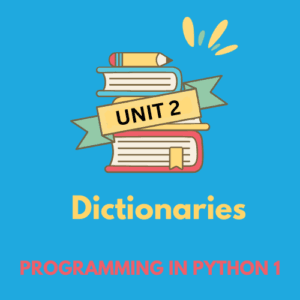
Click On the Download Button Below 
Introduction to Dictionaries In Python :-
A dictionary is an unordered collection of key value pairs. It is mutable and does not allow duplicates. Creating a dictionary is as simple as placing items inside curly braces {} separated by commas.
Objectives of Dictionaries In Python :-
- Store Data in Key-Value Pairs: Allow for efficient storage and retrieval of data using unique keys associated with values.
- Ensure Fast Lookups: Provide quick access to data by using keys, offering average O(1) time complexity for lookups.
- Flexible Data Structure: Enable the storage of various data types as values (e.g., lists, integers, strings, other dictionaries).
- Support Key Uniqueness: Guarantee that each key is unique, ensuring no duplicates within the dictionary.
- Allow Dynamic Data Modification: Support adding, updating, and removing key-value pairs during runtime.
- Provide Versatility: Allow for nested structures (dictionaries within dictionaries) for complex data storage.
- Enable Iteration: Support easy iteration over keys, values, or both, to process dictionary elements effectively.
List of References for Dictionaries In Python :-
- Charles Dierbach, Introduction to Computer Science using Python, Wiley, 2013
- Paul Gries , Jennifer Campbell, Jason Montojo, Practical Programming: An Introduction to ComputerScience Using Python 3, Pragmatic Bookshelf, 2/E 201
Summary of Dictionaries In Python :-
A dictionary in Python is a built-in data structure that stores data in key-value pairs. Each key in a dictionary is unique, and it maps to a value, which can be of any data type, such as a string, list, or even another dictionary. Dictionaries are highly efficient for lookups, as they provide average O(1) time complexity for accessing values by their keys.
